Rovinj Hosting One Of Biggest One-Design Regattas In Croatia
ZAGREB, 31 March 2022 - ACI marina Rovinj is known among sailing fans as the location of numerous regattas in recent years and on 1-3 April it will host the first European Sailing Series in the Melges 24 Class.
Nine ACI Match Race Cups, three RC44 regattas and one ClubSwan36 regatta have turned the Istrian resort of Rovinj into a respectable sailing destination.
Thirty sailboats from Croatia, Austria, Italy, Hungary, Germany, Slovenia and Great Britain as well as numerous famous names in sailing will make the premiere European Sailing Series in the Melges 24 Class one of the biggest one-design regattas ever held in Croatia.
The Melges 24 is one of the most popular monohulls in the world, with more than 900 sailboats made. With over 20 boats, Croatia has the third largest numerous fleet in the world, which was crucial for hosting the premiere European Sailing Series.
Nine races are planned for the three-day event in Rovinj.
Travel and destinations: For more on travel in Croatia, follow TCN's dedicated page.
Introducing Three of Croatia's Minority Communities
31 March 2022 – The European continent is infamous for its ethnolinguistic diversity. Anyone who has journeyed across the winding and seemingly haphazard borders which paint the atlas know that accents, dialects, and even whole language families can change within as little as 5 km. A look into Croatia's minority communities.
Some countries are pointed out more frequently as linguistic mosaics, while others have yet to garner such recognition. For example, most Spaniards would likely agree that anyone who visits Barcelona and fails to embrace the Catalan ethos has not fully captured the essence of their destination. The same could be said about the Welsh in Cardiff or Breton in the French city of Rennes. While it may not receive the same attention, Croatia is no exception to this rule of multiplicity. Home to a plethora of unique ethnic and linguistic minorities, each with their own historical and cultural origins, Croatia is a destination where visitors will benefit significantly from putting effort into scratching beyond the surface. As more and more people act on their desires to explore and discover, cultural awareness is becoming an increasingly valuable tool in the traveller’s skill set. So, to make cultivating this vagabond essential a little easier, I have put together a list including three of Croatia’s largest minority groups by population. This catalogue is far from complete, but I hope it will wet the palate of those looking to dive deeper into Croatia’s beautiful and surprising diversity.
Serbians
The relationship between Croats and Serbs extends back centuries. The two groups have coexisted in towns and villages throughout the Western Balkans since the fall of the Roman Empire, an epoch when both peoples were establishing themselves in the region. Comprising just over 4% of the total population, Serbs are the most numerous ethnic minority in Croatia. Similarly, Croats maintain a similar status in the neighboring republic. Given their cultural, linguistic, and historical ties, it is no surprise that ethnic Serbians within Croatia has much in common with the local majority.
Despite the parallels, several notable differences exist, which may be almost redundant to outline on this platform. So, I will keep it brief. Religion is pointed out most often as a significant difference between Croats and Serbs. Serbians are majority Eastern Orthodox by tradition, and Croatians are Catholic. Moreover, Cyrillic script is standard and employed by those writing in the Serbian variant of the language. On the other hand, Croatia uses the Latin script, making an already challenging language a little simpler for those of us who speak English, Spanish, or German as our mother tongue.
Beyond these somewhat superficial distinctions, the Croatian-Serbian relationship contains deeper, more far-reaching nuances. I would advise anyone considering a holiday in Southeastern Europe to do their homework. As you may already know, the history of Croatia is dense, convoluted, and filled with many thorny spots that have influenced the psyche of many of the country’s current inhabitants. It is best to approach specific topics with respect and be culturally aware. Topics such as the Homeland War and Yugoslavia are excellent examples of such cases. That said, do not shy away from a conversation inspired by genuine curiosity. Many locals are willing to discuss history with curious tourists. Just be respectful and prepared to receive an ear-full of opinions.
Italians
One only needs to visit the colosseum at Pula to know that Italians have made a home in Croatia since antiquity. The Italian ethnic minority of modern Croatia is small, comprising only around 20,000 people or less than 0.5% of the total population. Despite these low figures, the Italian influence along Croatia’s notoriously stunning coastal regions is apparent. The Italians of Croatia are descendants of Romanized Illyrians and transplants from the empires that later ensued.
Venice ruled over much of Dalmatia and Istria for nearly 400 years, leaving a mark on these territories that still stands the test of time. Many of the cities and islands which litter cruise itineraries, and travel blogs worldwide actually have a second Italian name, a testament to the varied history of these settlements. Think of cities like Spalato (Split), Ragusa (Dubrovnik), and Zara (Zadar). In fact, Fiume (Rijeka) is a direct translation meaning river in both languages.
While the Italian population is modest, it was once more pronounced, comprising substantial proportions of essential centers in Istria and Dalmatia. Two massive exoduses occurred in the aftermath of both WWI and WWII, which resulted in the drastic reduction of the Italian population. Enthusiastic tourists should pay attention when traversing the villages, towns, and cities that dot the eastern Adriatic. A short history lesson will go a long way, providing new insights into the monuments, architecture, and people that coalesce to provide one of the most iconic destinations of the 21st century.
Hungarians
Much like the previous entry, Croatia’s Hungarian minority is a direct result of human migration and the rise and fall of empires. With approximately 14,000 individuals, ethnic Hungarians only make up less than 0.4% of Croatia’s total population, residing predominantly in communities near the Hungarian and Serbian borders to the east. Hungary and Croatia share a long relationship that extends back to the 11th century when the former proclaimed sovereignty over the Kingdom of Croatia. This union persisted until 1918, leaving plenty of time for people to move and blend across the borders we recognize today.
Those with a Hungarian connection may find interest in visiting municipalities like Kneževi Vinogradi and Bilje, where Hungarians constitute nearly a third of the local population. Similar ethnic minorities live in surrounding Romania, Slovakia, Serbia, and Slovenia, showing visitors that Magyar magnificence doesn’t stop at Budapest.
For more, make sure to check out our lifestyle section.
Croatia Improving In EU Funds Absorption
ZAGREB, 31 March 2022 - Croatia has surpassed nine EU member states in terms of EU funds absorbed since 2020 and now ranks 19th, the Regional Development and EU Funds Ministry said on Thursday.
According to Cohesion Data, the European Commission platform on finances and achievements under the European Structural and Investment Funds 2014-2020, in 2020 Croatia ranked 27th among the EU's then 28 countries in terms of payments.
Croatia is better at absorbing funds than Spain, Italy, Slovakia, Romania, Belgium, Denmark, Luxembourg and Austria. Lithuania has absorbed the most EU funds.
In the 2014-20 period, Croatia had €10.73 billion from ESIF at its disposal. By 24 March 2022, projects worth €13.4 billion were contracted, or 124.91% of the allocation, above the EU average of 113%.
Of that amount, €7.32 billion was paid and €6.03 billion was verified, 68.17% and 56.17% of the allocation, respectively. The EU payments average is 63%.
If €763.17 million from REACT EU and €597.56 million added to the Rural Development Programme are added to the original allocation, the total allocation by 2023 amounts to €12.09 billion.
Between 2013 and 24 March 2022, Croatia received from the EU budget HRK 49.06 billion more than it paid into it. When the advance paid for the National Recovery and Resilience Plan is included, Croatia is HRK 55.19 billion in the black, the ministry said.
Politics: For more, check out our politics section.
Zagreb To Take €50m Loan For Liquidity Of City-Owned Companies
ZAGREB, 31 March 2022 - Most deputies in the Zagreb City Assembly on Thursday supported a proposal to take a new short-term loan in the amount of €50 million, with a repayment period of 12 months, and the funds will be used to improve the liquidity of the city-owned companies.
Thirty million of the 50 million euro loan will be used to improve the liquidity of the Zagreb Holding multiutility conglomerate and 20 million for the liquidity of the ZET public transportation company. The city will take a loan from the European Bank for Reconstruction and Development.
Even though it was endorsed, the proposal to seek the loan was criticised by some opposition parties, and the Croatian Democratic Union (HDZ) deputies objected that since the start of his term Mayor Tomislav Tomašević had taken loans in the amount of €1.1 billion.
Tomašević replied that the city was taking loans in order to settle the accumulated debt of the previous city government in the amount of €1.4 billion.
Politics: For more, check out our politics section.
KK Split Gifts an Exciting 81:80 (38:43) Win to Fans
March 31, 2022 - KK Split gets the 81:80 (38:43) win as Mega Belgrade had the last ball but fell short in the ABA League game.
Tonight 1250 spectators created exactly the atmosphere at Gripe that Srđan Subotić, coach of KK Split had called for and the Yellows thanked them with a single point last-second 81:80 victory.
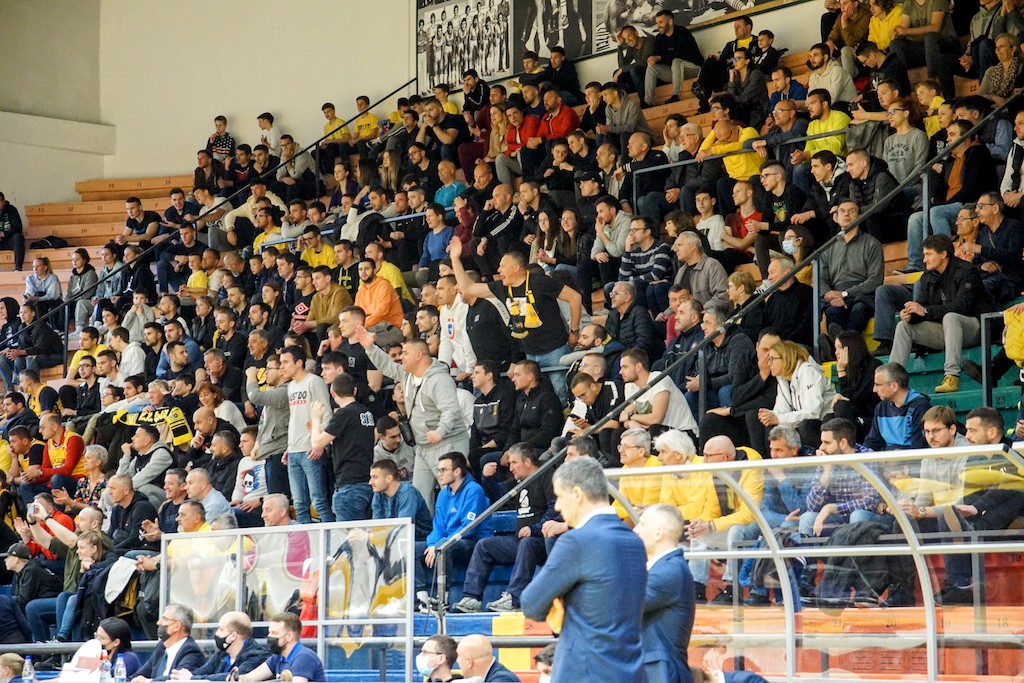
"This is a key game for us in this part of the season, with the victory we can gain a significant advantage over Krk [currently last in the league but still with a chance to reach 13th position]. The most important thing is our physical fitness after a difficult game against Zadar. Mega is young, twelve days without games. If we respond physically then our chances are great. I hope the stands are full, the support in the match with Zadar was great, I believe it will be the same against Mega." The Yellows only had 46 hours to re-generate since their Tuesday single-point home defeat against KK Zadar (read about here) but had still brought some confidence to the game with back-to-back wins in ABA League against Mornar (76:67) and a surprising away game win at Borac (59:64).
MEGA Belgrade on the other hand had lost six games in a row in the ABA League since their 79:86 derby victory at FMP Belgrade on January 29th. Since the beginning of the calendar year, they have been pretty much in the table’s no-man’s land with relegation being no concern and the playoffs out of reach. Vladimir Jovanović, coach of Mega Mozart before the game: “Split has very good momentum, they celebrated two victories, against Mornar at home and against Borac away, they definitely raised their form. Since the first match in Belgrade, they changed the team a lot, in addition to Jones, who was absent from the court for a long time, they added Shorter and their entire outside line is very good.” It was quite obvious that if the guests wanted to win the game they had to improve the level of defense compared to their previous six games.
The spectators witnessed an entertaining game right from the start. The guest team's sharpshooter Simanić opened the game with a three-point shot before a team effort with a three-pointer by Barič, a block by Jones, and a mid-range jumper from Shorter was followed by a beautiful effort for two more points by Jones to give Split the first lead (7:3) of the night.

Both sides were able to count on their accuracy from outside. Belgrade's Simanić (7 of 8!) and Split's Perković (4 of 6) kept making their outside shots throughout the entire game. The guests were able to pull away a little by the end of the first half due to Simanić who delivered a perfect first half with 2 for 2 from the field, 1 of 1 from the free-throw line, and an incredible 4 for 4 from behind the three-point line for a total of 17 points in only 10 minutes and 17 seconds on the court.
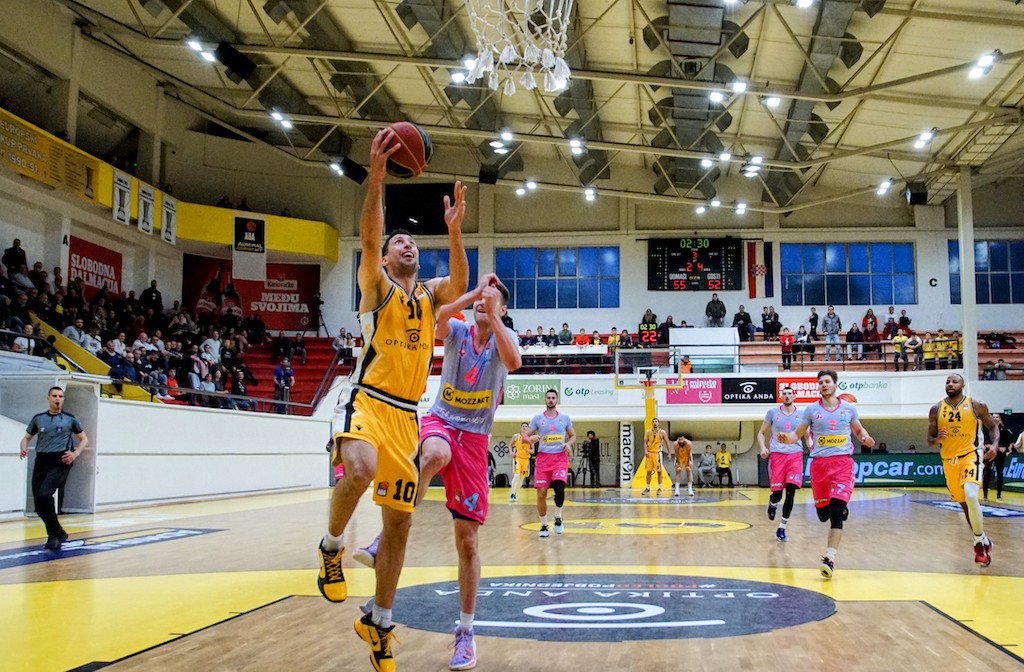
The game went back and forth in the third quarter. Mega went up by 12 points at the beginning before Split turned it around to finish the quarter 59:55.
What the spectators got to see in the fourth quarter made up for a lot. After none of the teams could pull away decisively, Perković made four successful free throws after an intentional foul on the fast break to give his team an important 71:64 lead.
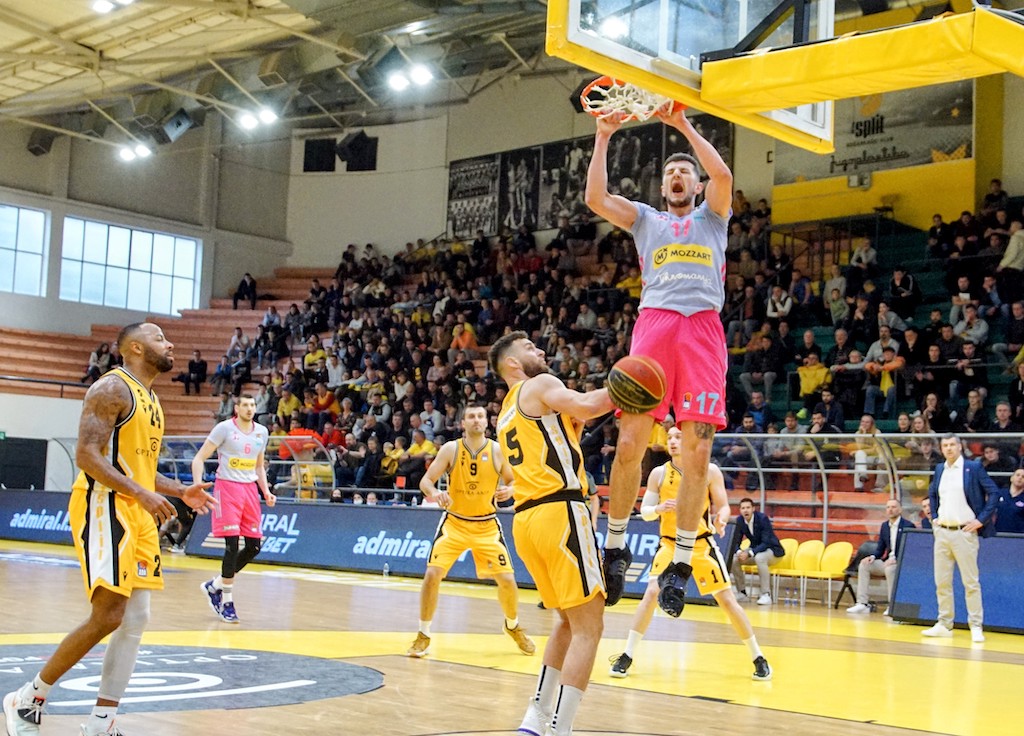
The guests came back with a great 5 point run to 71:69 before two successful free throws by Shorter after another fast break foul meant 73:69.
Mega Belgrade kept their cool and answered with another successful 3-point shot by Simanić to make it 73:72 and possession for the Yellows with 68 seconds to go.

Ukić missed his three-point attempt but Žganec came up with the offensive rebound and his scoring attempt received a goaltending call to give the home team a 75:72 lead with 40 seconds to play.
At 77:76 another intentional foul by Belgrade's Metković gave Žganec the chance to decide the game but the inside man only scored 1 of his 2 free throw attempts.
Perković made it better by scoring what seemed to be the decisive 3 point shot of the game for the 79:74 lead but it was Simanić again with another 3 to reopen the race at 79:77 with 7 seconds to play.
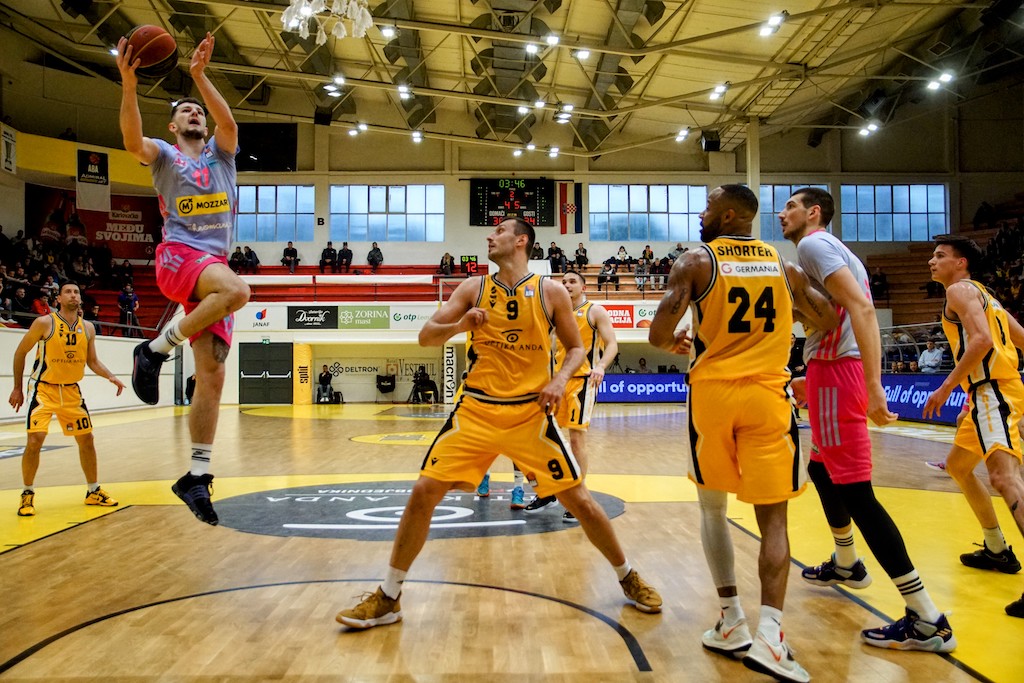
Two successful free throws by Shorter to make it 81:77 with 4 seconds to play should have been the end of the game.
Should have, could have, would have, if Split was not stupid enough to foul Jović during his final three-point attempt. The ball went in, 81:80, free-throw Jović to make it into overtime.
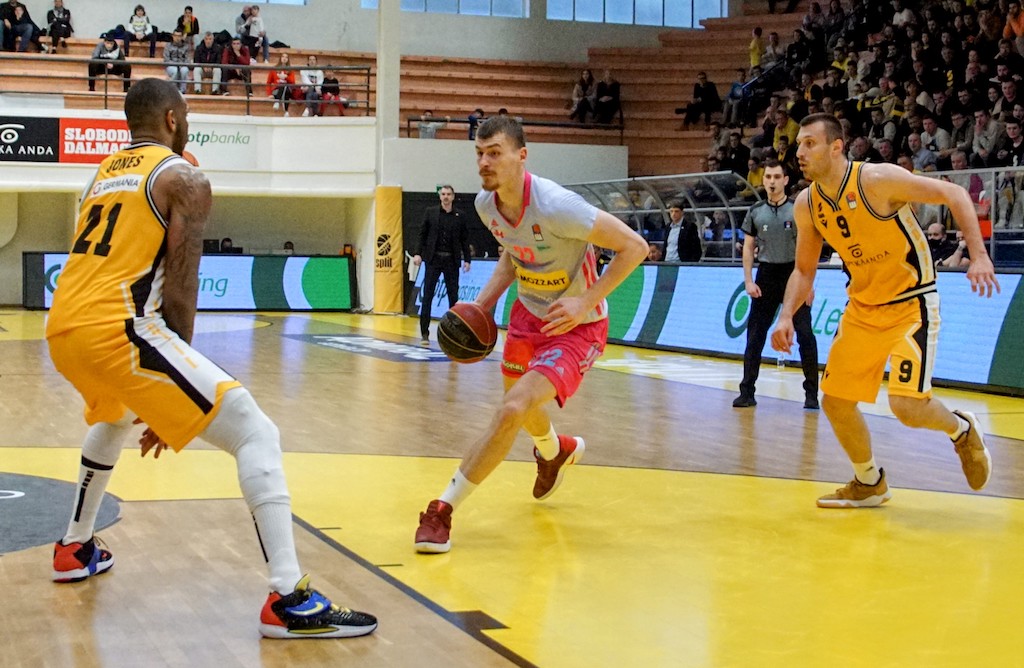
As if the excitement was not enough, Jović missed, the guests picked up the offensive rebound with a second to play but luckily for Split the ball went out of control and time ran out to give Split the third ABA league victory in a row and Belgrade a frustrating trip to Zadar after seven straight losses.
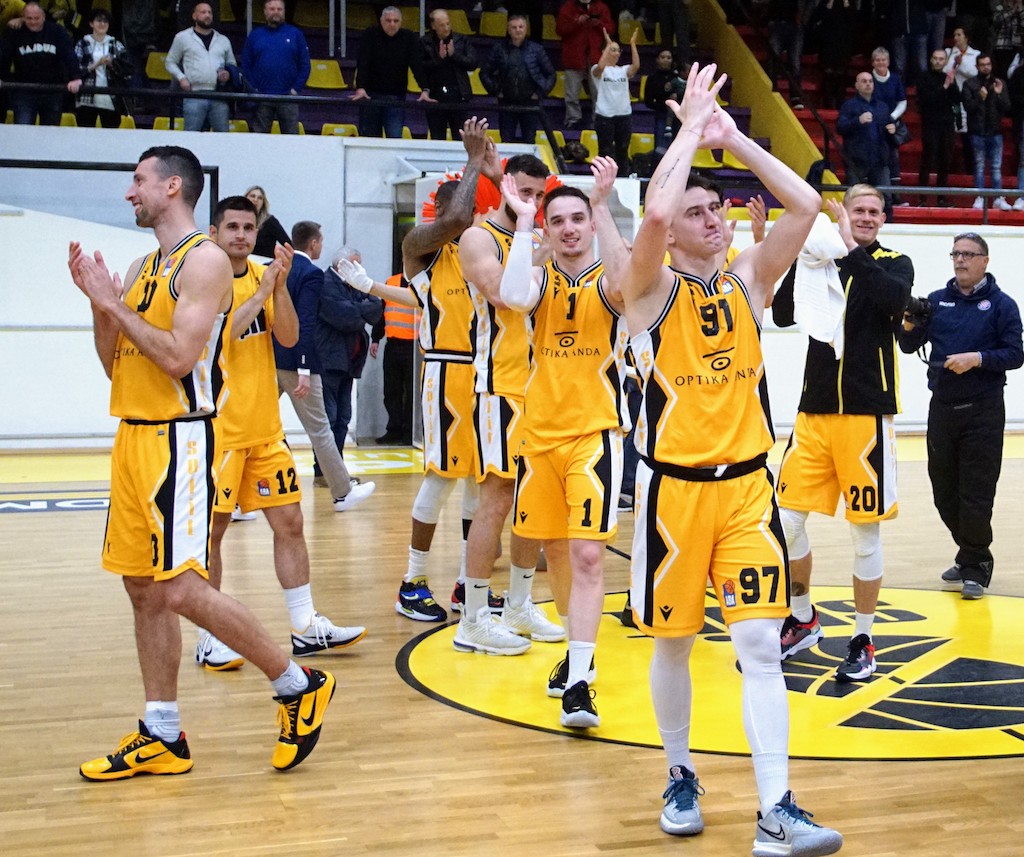
Simanić was the top scorer of the game with 30 points followed by his teammate Jović with 22. For KK Split Perković collected 21 points followed by Shorter with 16. Honorable mention also goes to Barič who made 4 of his 5 three-point attempts for a total of 15 points.
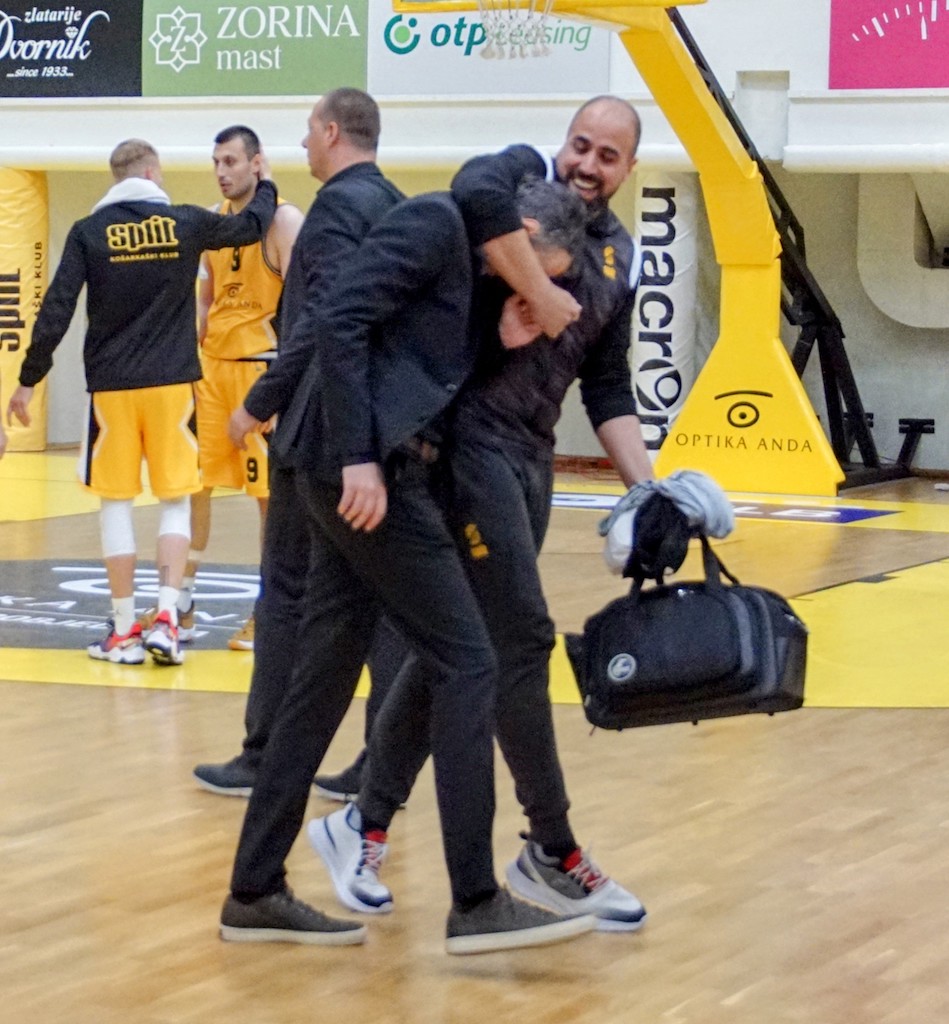
Referees: Luka Kardum, Edo Javor, Stefan Ćalić
Box score:
https://www.aba-liga.com/match/162/21/1/Boxscore/q1/1/home/split-mega-mozzart/
ABA League Format:
The 14 teams play each other twice during the regular season to establish 6 teams that will play for the title, one team that will drop out of the league directly, and the “lucky 13th” having a chance to stay in the league by winning a best of three series against the runner-up of ABA League 2. The six teams that finish at the top of the league at the end of the regular season play each other in a play-off mode. The top two teams receive a wild card and enter the playoffs in the semi-finals, while the other four teams play each other first (3rd against 6th and 4th against 5th). The reigning champion is Red Star Belgrade who defeated Budućnost in a long 3-2 final series.
To read more about sports in Croatia, follow TCN’s dedicated page.
Croatia Met NATO Defence Budget Target In 2021
ZAGREB, 31 March 2022 - According to NATO estimates, Croatia last year met the target the allies set for investing at least 2% of GDP in defence and significantly surpassed the target of earmarking at least 20% of the defence budget for equipment.
Last year's purchase of fighter jets significantly increased Croatia's defence budget.
According to a report presented by Secretary-General Jens Stoltenberg on Thursday, NATO estimates that last year Croatia increased its defence budget to 2.16% of GDP from 1.71% in 2020 and that 30.6% of its defence outlays were earmarked for equipment.
NATO member states committed in 2014 to increase their defence budgets to at least 2% of GDP by 2024 and to set aside at least 20% of the defence outlays for military equipment.
Greece earmarked the most for the defence last year, 3.59% of GDP, followed by the United States (3.57%) Poland (2.34%), the UK (2.25%) and Croatia, Estonia and Latvia (2.16% each).
The allies which earmarked the least for defence were Slovenia (1.22%), Belgium (1.07%), Spain (1.03%) and Luxembourg (0.54%).
Greece also set aside the most for military equipment, investing 38.8% of its military budget, followed by Luxembourg (38.2%), Hungary (37.2%), Poland (33%), Turkey (30.7%), Croatia (30.6%), and the US (29.4%).
The allies which set aside the least for military equipment in their defence budgets were Albania, Bulgaria, Slovenia, Canada, Portugal and Germany, ranging from 14.9 to 18.6%.
2/3 of Croats for NATO
Last year NATO commissioned a public opinion poll on its perception which shows that 67% of Croats were for membership in NATO, 13% were against, while the rest did not know.
NATO has the highest support in Poland (84%), Albania and Lithuania (82% each), and Romania and Portugal (79% each), while support is lowest in Slovakia (46%), Montenegro and France (50% each).
7 in 10 Croats believe NATO membership reduces the likelihood of a third country's attack
Sixty-nine per cent of Croats believe that membership reduces the likelihood of a third country's attack.
This percentage is highest in Lithuania (76%) and lowest in the US (42%).
Politics: For more, check out our politics section.
Croatia Preparing Plan For Development Of Its Geothermal Potential
ZAGREB, 31 March 2022 - Economy Ministry State Secretary Nataša Mikuš Žigman said on Thursday that work was underway to draft a plan for the development of Croatia's geothermal potential.
Speaking at a government session, Mikuš Žigman said that in line with the National Recovery and Resilience Plan, the Hydrocarbon Agency would be entrusted with implementing six geothermal energy projects, for which HRK 225 million (€30 million) is envisaged.
A total of €25 million is planned to be used from the Operational Programme Competitiveness and Cohesion for the use of geothermal energy for heating.
Mikuš Žigman said that the government supported all activities to increase the life span of the joint Croatian-Slovenian nuclear power plant Krško until 2040 and that it also supported the use of nuclear energy to help decarbonise the economy.
Excise taxes on natural gas and electricity are at the minimum level prescribed by the Council directive on the taxation of energy products and electricity and the Excise Tax Act prescribes exemptions for energy products and electricity for the industrial sector, she said.
Also, the excise tax on blue-dyed diesel for the agricultural sector has been set at zero, and the government has adopted a regulation lowering excise taxes on unleaded motor gasoline and diesel.
Politics: For more, check out our politics section.
Croatian Souvenirs: 10 Things That Fit in Your Suitcase
31 March 2020 - After wandering the cobblestone streets and soaking up the Mediterranean sun, maybe you’re thinking of picking up something to remember your time here, or to share a part of your travels with loved ones back home. Here are some unique Croatian souvenirs you won’t find anywhere else. And better yet, most of them fit into your carry-on! All the better for those last-minute shopping trips before hopping on your flight home.
Lavender products
Did you know that lavender originated from the Mediterranean before growing in popularity around the world? 50 years ago, Croatian farmers were producing up to 10% of the world’s lavender flowers, before a series of wildfires decimated the industry.
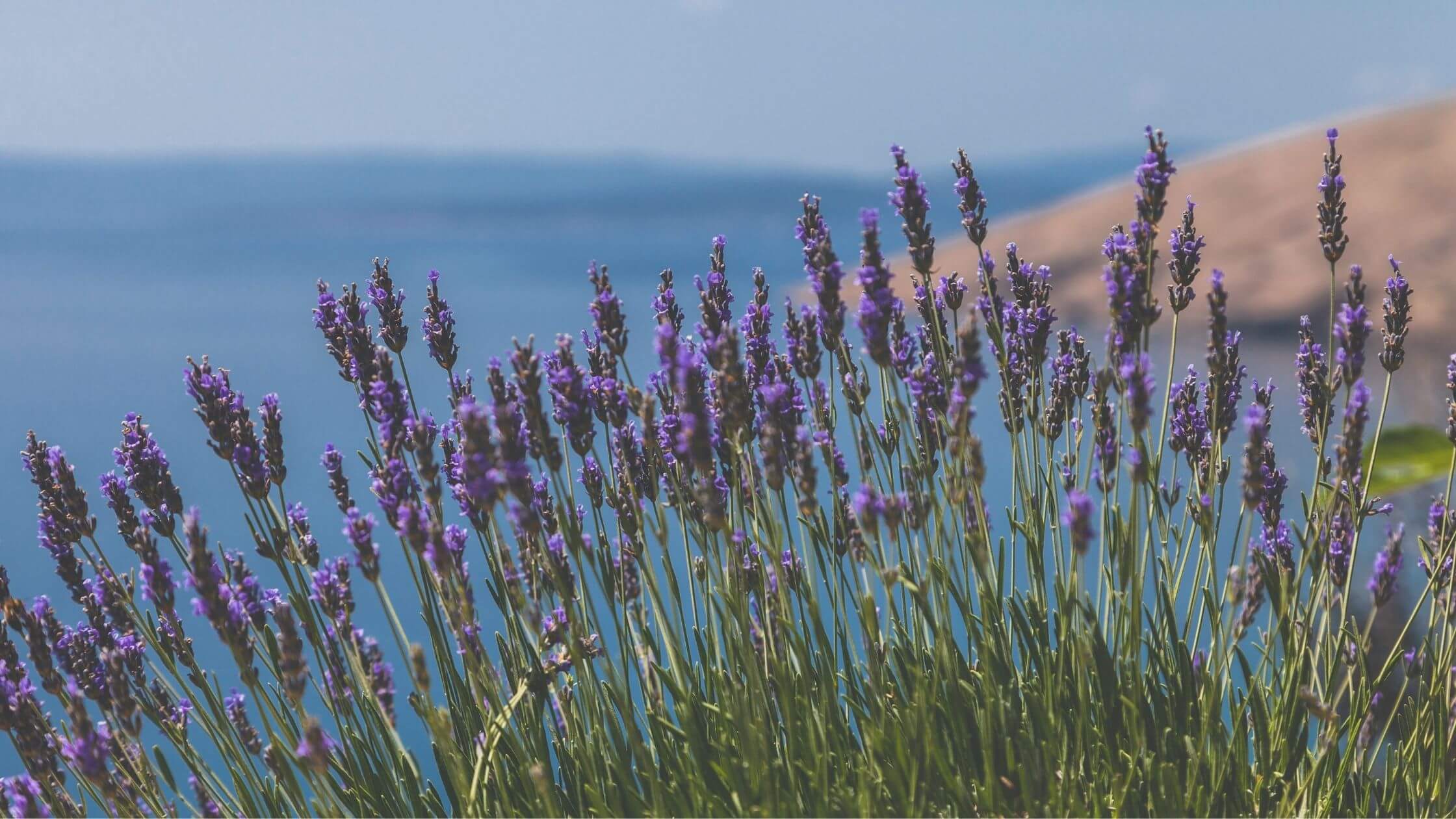
Visit some of the most gorgeous lavender fields on Hvar, an island in the South of Croatia. (Image: Pexels)
Today, Croatian lavender production is making a comeback. Harvested in the Fall, its calming herbal essence is infused in a variety of products like soaps, lotions, and oils. Pick up a bottle of lavender oil, where just a couple drops in an infuser or laundry, goes a long way.
Istrian truffles
The dark, dense forests in the hinterlands of Istria provide the perfect breeding ground for Croatian truffles. So much so that in 1999, Giancarlo Zigante, a local truffle hunter found the largest truffle in the world at the time, weighing 2.86 pounds (1.29 kgs). He later had the “millennium” truffle cast in bronze before selling it at a whopping USD$330,000 at an auction.

Prices of whole Istrian truffles can start at €50 for the more common autumn truffle and €200 for the rare white truffle. (Image: Pexels)
If you can, purchasing a whole truffle allows you to savor its intense, earthy aroma, when freshly shaved over dishes like pasta or eggs. You can also find truffle infused oils, cheeses, chips and even chocolate (it’s tasty!), guaranteed to please any foodie.
Olive oil
Unlike other countries in the Mediterranean such as Italy and Greece, Croatian olive oil can be difficult to find as export levels have yet to reach their counterparts. While Istria produces the largest proportion of Croatian olive oil (10%), other varieties of olives are also grown on the Dalmatian coast which produces different types of oil. So grab a bottle of these award-winning oils on your next visit here.
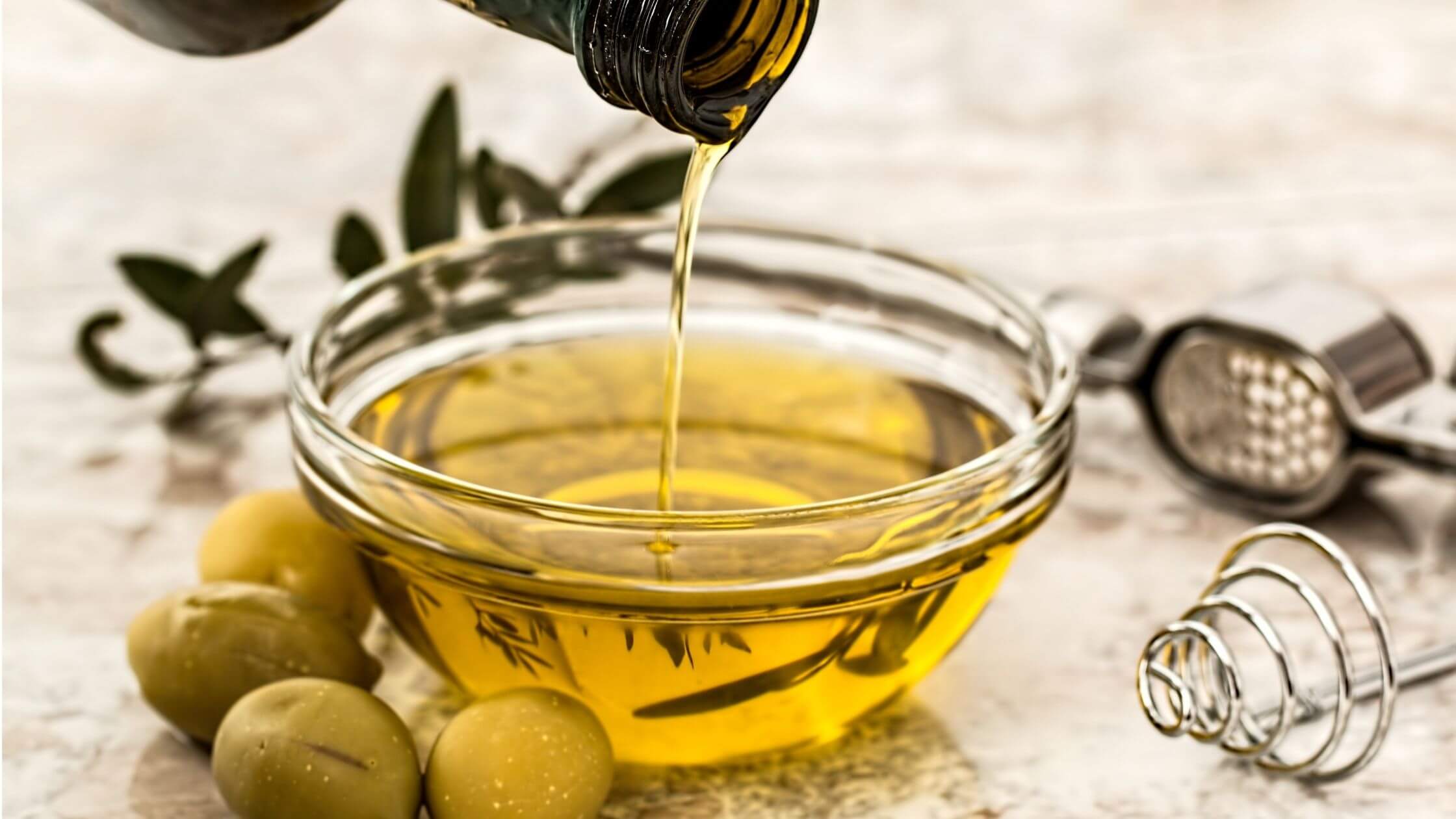
Olive oil from Istria was considered the "gold standard" of oils during Roman times. (Image: Pexels)
Wine
Like olive oil, Croatian wine can be quite difficult to find outside the country. Thankfully, this trend is slowly changing with small, independent producers competing in the global wine market, and gaining recognition for its outstanding quality.
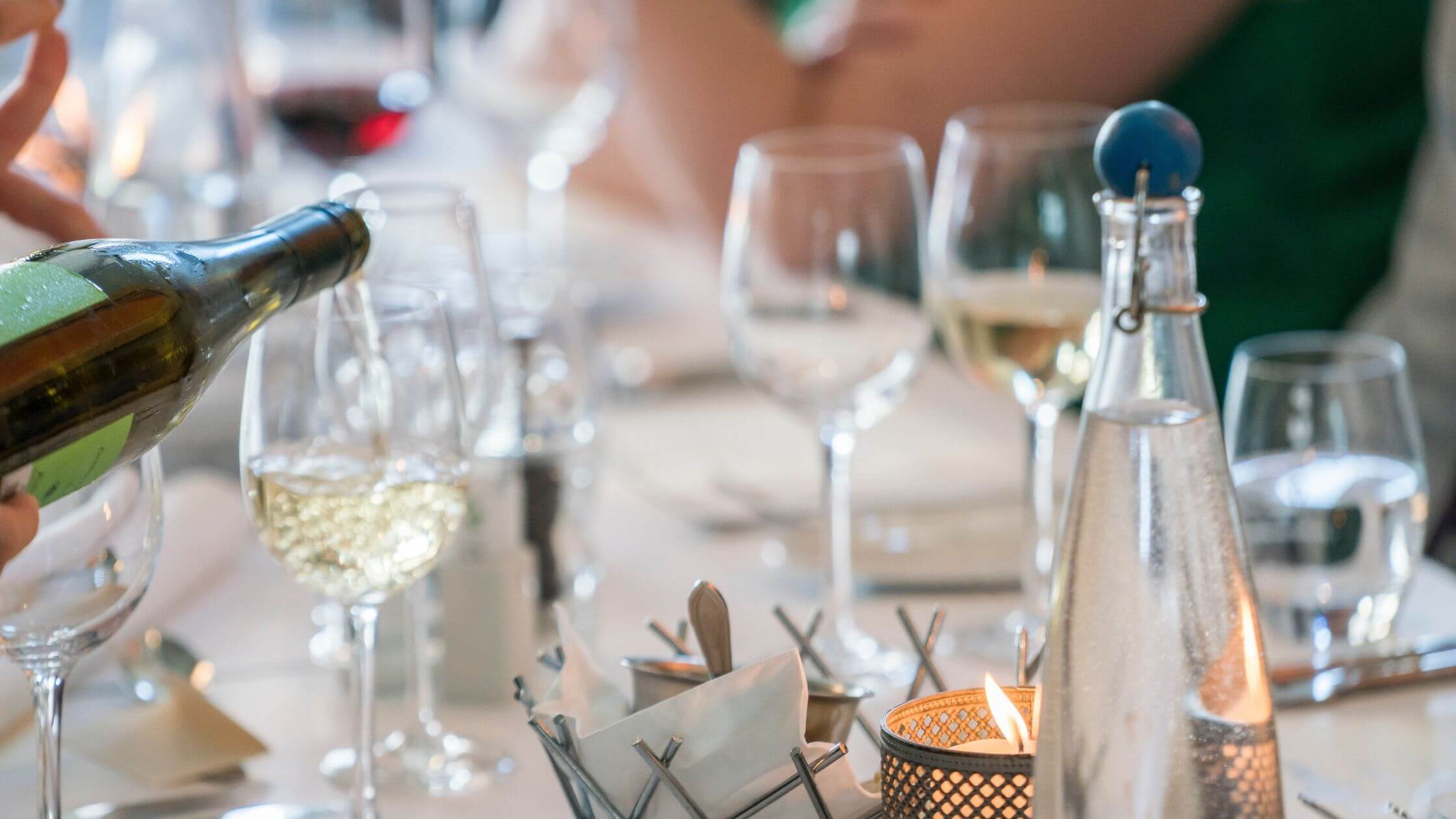
Try ordering "table wine" or "stolno vino" at Croatian restaurants, you'd be surprised how delightful they are. (Image: Pexels)
Croatian wine producers are equally adept at producing rich, fruity white wines such as Graševina, Pošip, and Malvazija, and luscious reds like Teran, Plavac Mali, and Zinfandel. Regardless of your preference, buy a bottle or two for your next dinner party back home.

(Croatian vineyard along the Dalmatian coast. Image: Author's own)
Preserved fruit
Whether it’s at the store or the local market, you’ll always be able to find preserved fruit either whole or in jams, on sale throughout the year in Croatia. Popular local jam flavors include fig (a personal favorite), plum, cherry, and tangerine.
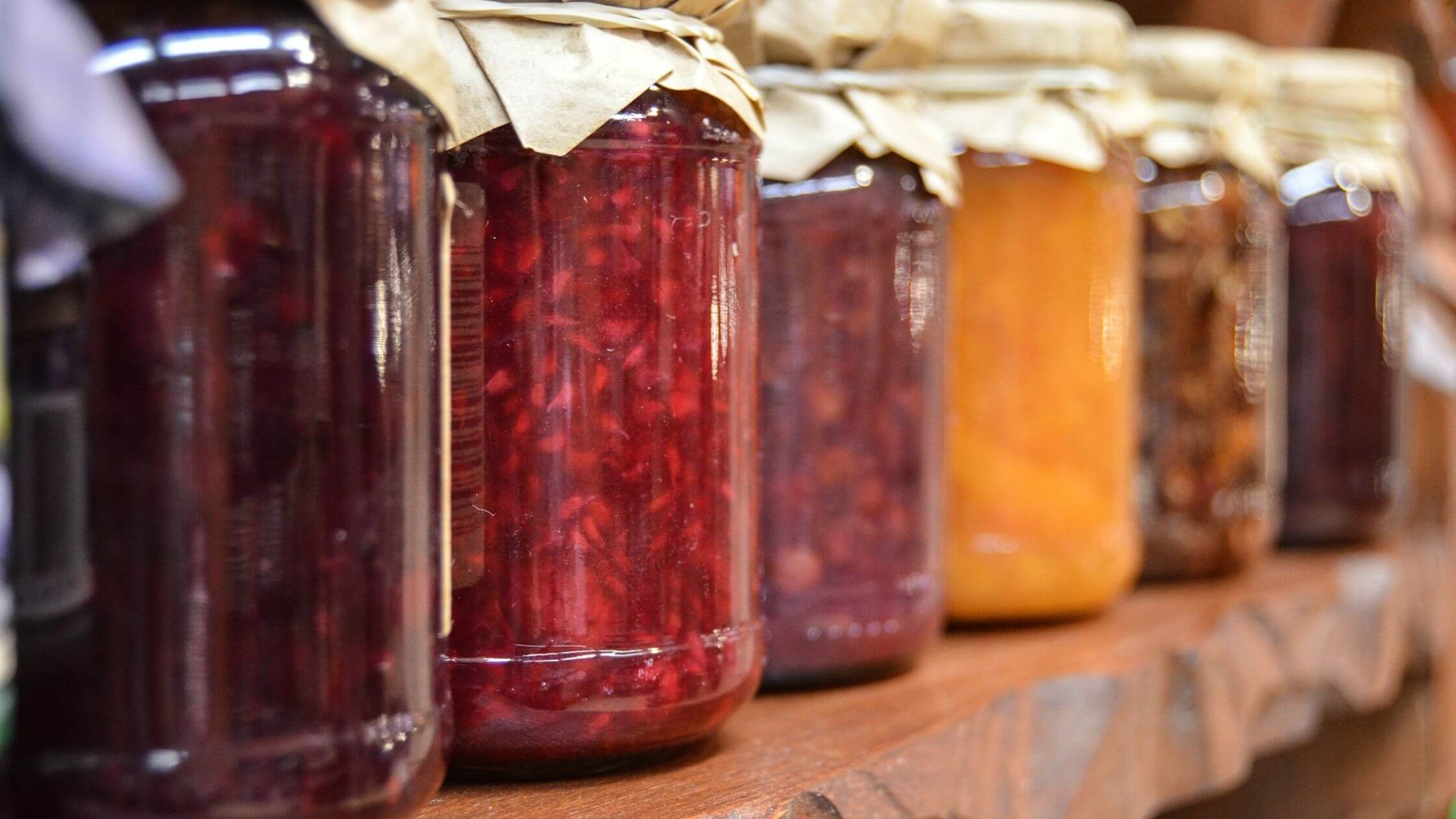
Homemade jam at a farmer's market. (Image: Pexels)
Alternatively, dried fruit and fruit peels also make delicious gifts. In the South of Croatia, you can often find packets of candied orange (arancini) and lemon (limuncini) peels, alongside dried fruits such as figs and apricots. Ideal as a snack on its own or added to baked goods.
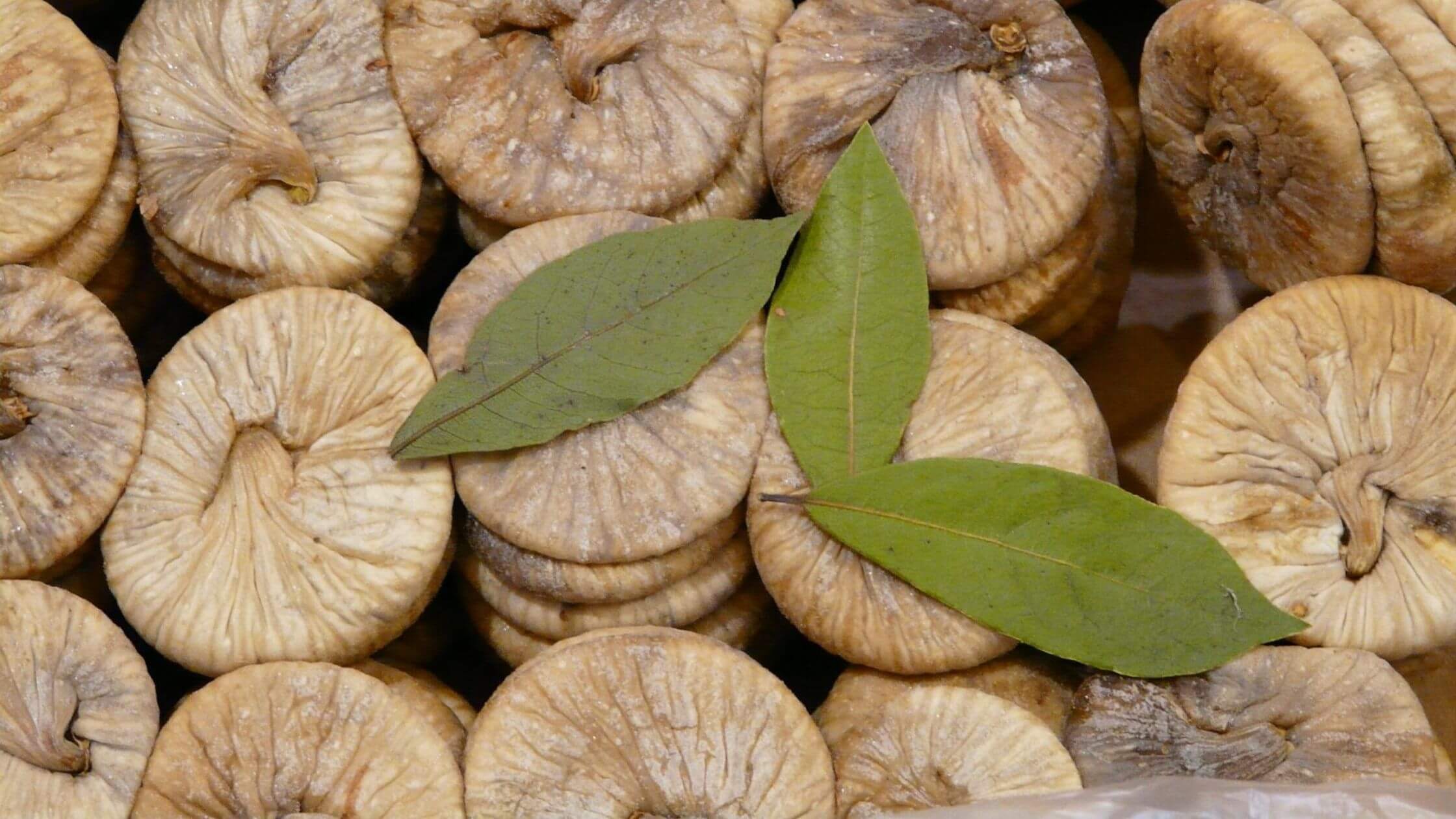
Dried figs are the perfect snack. (Image: Pexels)
Cravat
Once known as the Croat, the Cravat is the precursor to the modern-day tie and in fact, originates from these very shores. Historically, it was worn by Croatian soldiers to identify themselves due to the lack of military uniforms during the Thirty Years’ War (1618-1648). Its proliferation beyond the battlefield occurred when French soldiers took a liking to the rudimentary neckties worn by a regiment of Croatian troops stationed in France.
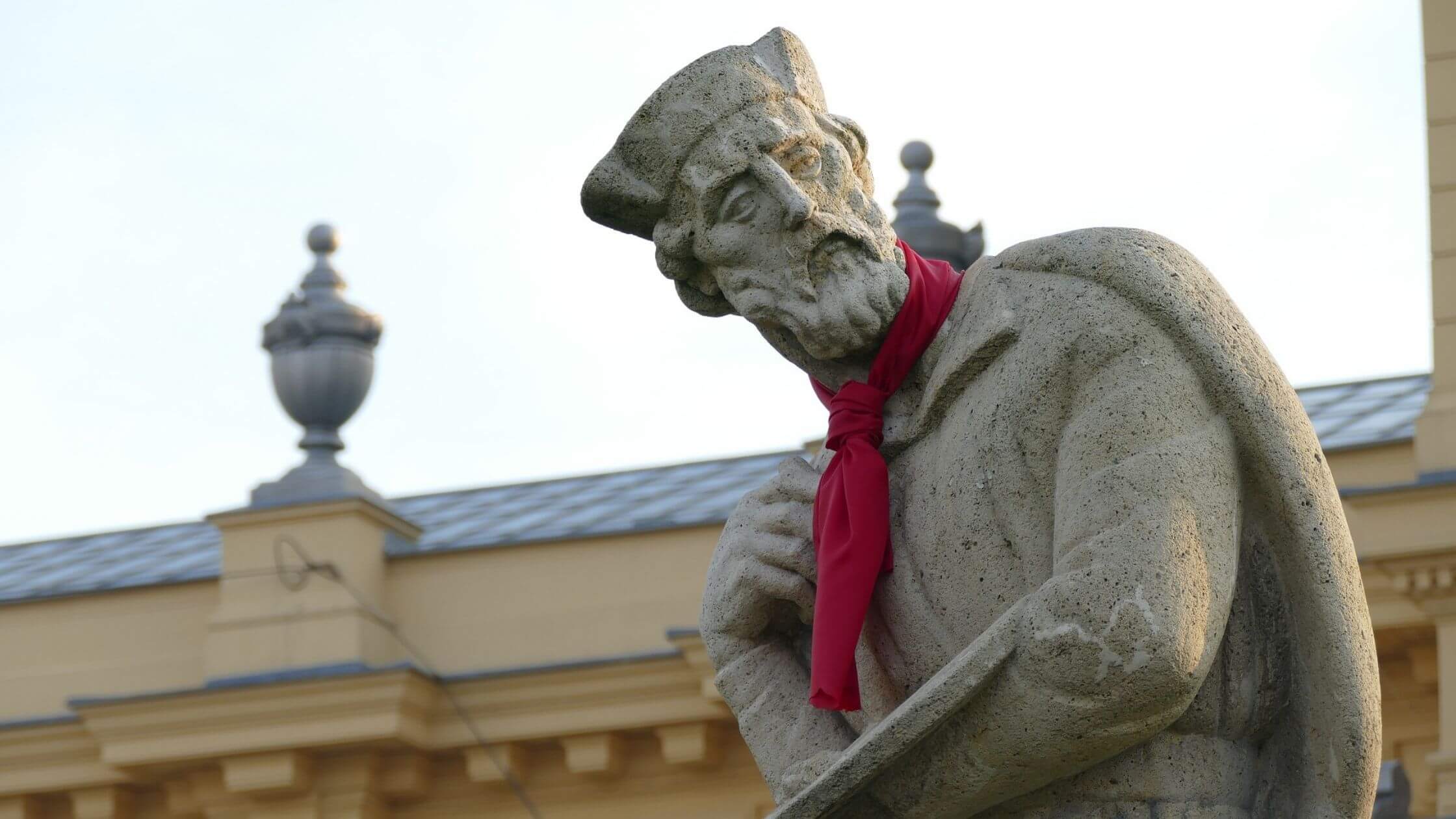
October 18 is Cravat Day, with the red cravat being the most traditional color. (Image: Pexels)
It wasn’t long before the trend spread throughout Europe and even took hold in America where the style is known as the ‘Ascot’.
Croatian lace products
Lacemaking has been a Croatian tradition dating back to the Renaissance (14th - 17th century). Since 2009, Croatian lace craft has been recognized as a UNESCO Intangible Cultural Heritage.
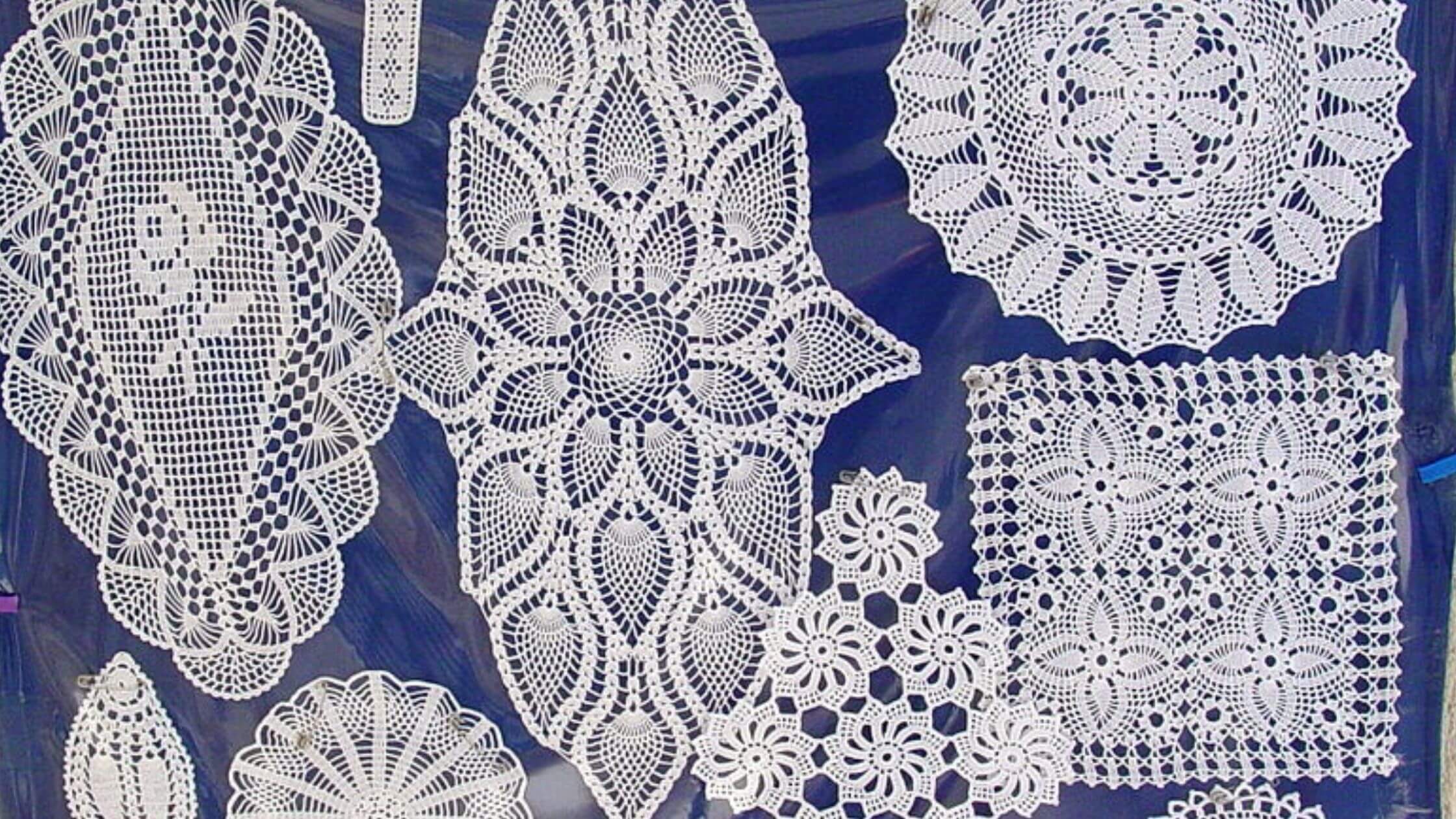
Delicate Pag lace doilies. (Image: Adam Jones adamjones.freeservers.com)
Three distinct traditions of lacemaking are still alive today, in the towns of Pag, Lepoglava, and Hvar, each with its own unique patterns and production methods. To purchase some of these keepsakes, lookout for gift stores or specialty shops selling lace tea cloths, place mats, or ornaments.
Rakija
Rakija is a fruit brandy considered the national drink of Slavic people across Croatia, Bosnia and Herzegovina, Bulgaria, Montenegro, Macedonia, and Serbia. Rakija has an alcohol content between 40-50% but can go up to 60% with a double distilling method that produces Prepečenica.

Different types of rakija distilled from different fruits. (Image: OPG Jukica/Facebook screenshot)
The most popular flavor in Croatia is plum, but rakija is also distilled from apricot, grapes, apples, pears, and quince. You can also find rakija infused with various herbs and spices such as juniper and carob for added complexity.
Gingerbread
Another Croatian craft on UNESCO’s Intangible Cultural Heritage List is gingerbread making. Gingerbread craft ship is common in the Northern areas of Croatia and remains a part of local festivities, events, and gatherings. Each craftsperson has their own unique way of decorating gingerbread, often icing each piece with names, verses, messages, or pictures.

Lucitar hearts ornaments in Zagreb. (Image: Croatia Full of Life/Twitter screenshot)
In Zagreb, the gingerbread heart (Licitar heart) is the most common motif. You can find stores that offer personalization services, making them ideal Croatian souvenirs or gifts for loved ones.
Salt
Salt pans in the towns of Ston, Pag, and Nin have been in use as far back as Roman times, producing some of the finest sea salt in the world thanks to their ideal geographical positioning. Salt is produced from April to October, with each production cycle lasting 1-2 months. Ston Saltworks, the oldest salt production facility in Europe, can produce 500 tons of salt annually from just 9 crystallization pools.
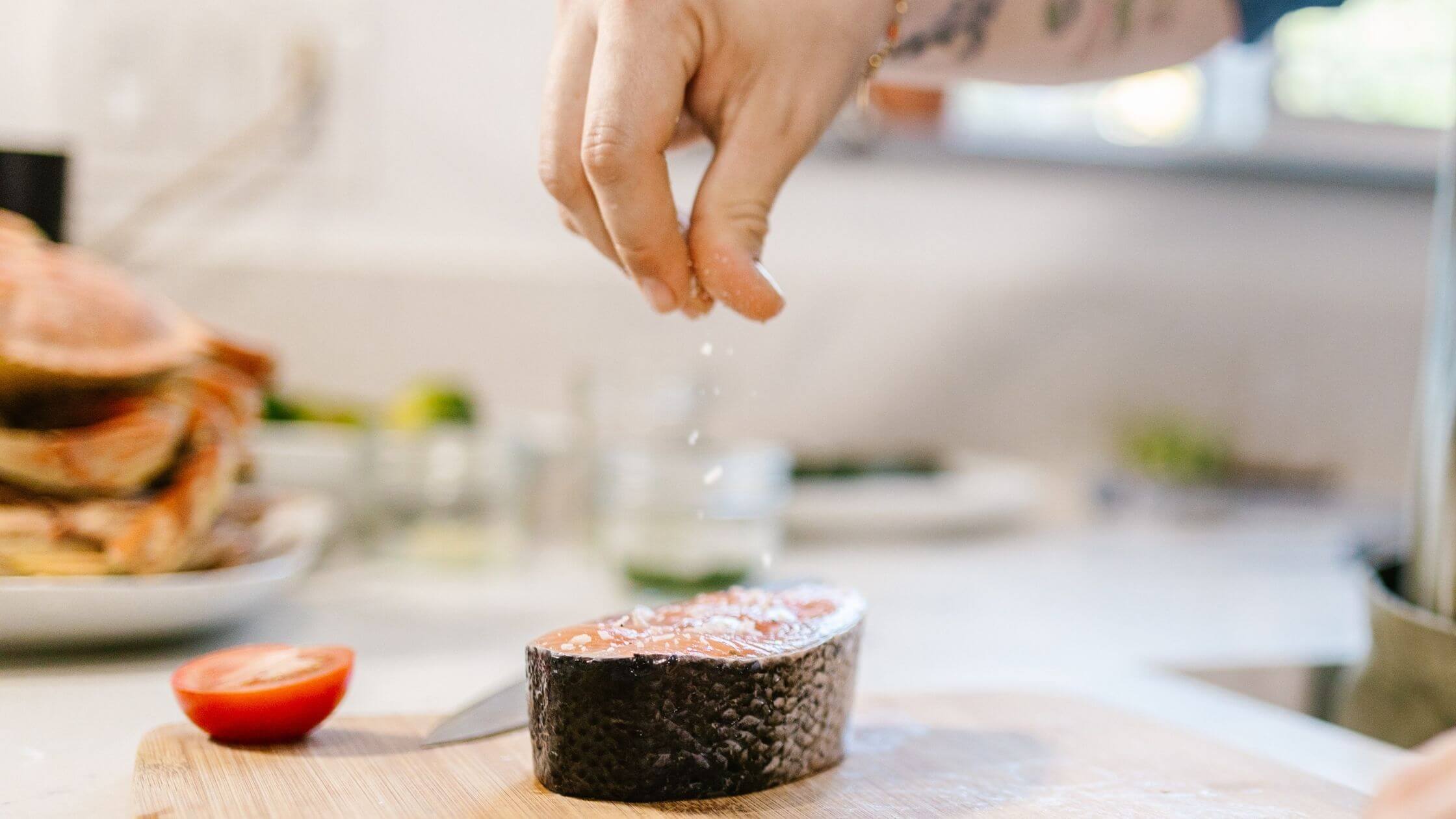
Crunchy flakes of Croatian salt make a great addition to any kitchen. (Image: Pexels)
Considering its affordability and prevalence of salt in everyday meals, consider picking up a bag of local salt the next time you pass through.
For more, check out our lifestyle section.
Govt Amendments To Improve Preschool Education Standards
ZAGREB, 31 March 2022 - Ensuring equal opportunities for all children and including them in the education system, increasing the number of children included and improving the quality of the education system is the aim of the final draft bill on preschool education.
The recommended amendments the government sent to parliament on Thursday are part of the education reform within the framework of the National Recovery and Resilience Plan (NPOO), with Science and Education Minister Radovan Fuchs saying the bill by no means revokes the National Pedagogical Standard.
In order to ensure that all children aged three to six can attend preschool education by 2030, it is necessary to secure additional capacities and infrastructure with an investment of HRK 1.6 billion from the NPOO, which should enhance the capacity of preschool institutions by 22,500 places.
The bill proposes a national network of children's kindergartens in an effort to improve planning regarding the construction and reconstruction of preschool institutions and to reduce the differences in development, thus enabling the inclusion of more children in early and preschool education.
The bill enables the possibility for elementary school teachers to be employed in kindergartens.
Having in mind regional differences, the bill envisages the possibility of funding from the state budget to complete investments for EU projects to build kindergartens in less developed areas.
It also provides for the possibility to secure funding to maintain the fiscal sustainability of kindergartens established by local government units based on criteria set by the government.
Final draft bill on the Croatian Science Foundation
In an effort to boost the research and innovation potential and implement programmes planned under the NPOO, the government sent a final draft bill on the Croatian Science Foundation to parliament.
The foundation was established with the aim of developing and promoting science and technological development by ensuring support to research of strategic interest for Croatia, however, the incumbent legislation is outdated, inflexible and does not correspond to the research demands in Croatia or Europe, Minister Fuchs explained.
"In an effort to increase the efficiency and functionality of investments in science projects and enable the implementation of programmes set by the NPOO, the bill defines only the framework to grant funds while the actual programmes will be defined by the Foundation's general acts," Fuchs added.
Politics: For more, check out our politics section.
Hotel Adriana Opening, as a UNESCO Hvar Easter Beckons
March 31 - Easter is just around the corner, a magical time on Hvar, as Hotel Adriana opens its doors for the season.
And just like that, here we go again.
Having lived on Hvar for 13 years, I got used to the subtle changes not only in the seasons, but in the mindset towards the tourist season. The winters were longggg. Initially, locals were tending to their olives and relaxing after the stress of another good season. But by January, many were itching to get started again, to see more signs of life.
And then came the run-up to Easter, the opening of hotels and businesses, and the first sizable numbers of tourists, predominantly for the UNESCO-protected Holy Week procession called Za Krizen (Behind the Cross), which has taken place every year for more than 500 years, including in a refugee camp in the Sinai Desert during the Second World War, so that the cycle would not be broken.
As a local, after a long winter with many businesses shut, the sight of a new season beginning with the opening of restaurants and hotels in the Spring sunshine is a heartwarming thing. It makes one long for lazy summer days at the beach even more.
April is one of my favourite months of the year to visit Hvar. It still has that local, pre-season feel, where the locals have time to chat, and where the businesses that are open are welcoming and reasonably priced. It feels at times that tourists and hosts are sharing a guilty secret - off-season Hvar is really pretty cool, just don't tell anyone.

So it is nice to see Suncani Hvar announcing the opening of Hotel Adriana on Saturday. The 4-star wellness hotel is a popular venue, with its spectacular waterfront views overlooking the fortress, main square, fabled Hvar riva and the Pakleni Islands. The views from the Top Bar are among the best there are on the island, a delightful spot for a coffee or something stronger.
Hotel management must be a very stressful business in these trying times, but it seems that the Hvar hoteliers are confident of a good season, with all its flagship hotels scheduled for opening this summer. Hotel Amfora and 5-star Palace Elizabeth hvar heritage hotel will open at the beginning of May, and Hotel Riva at the beginning of June.
One of the big advantages of visiting, apart from the lack of crowds, is of course the price. A Spring offer from Hotel Adriana looks a real bargain for those looking to explore Croatia's premier island at this time of year:
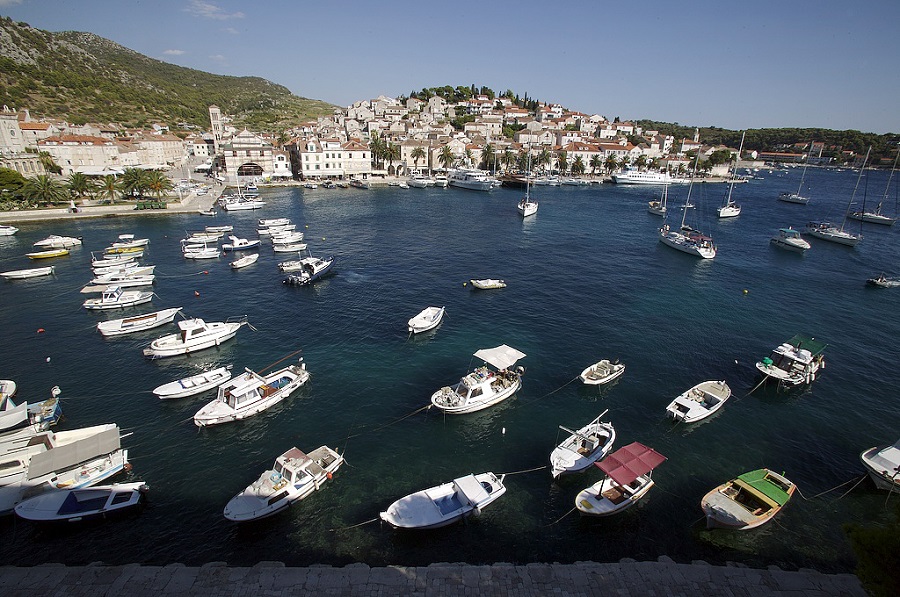
INCLUDED:
✓ Price from 59 EUR per person with breakfast included ✓ Bottle of house wine ✓ 10% discount in restaurants and bars
TERMS:
✓ Stay period April ✓ Min stay 2 nights ✓ Free Upgrade upon availability.
The winter cobwebs are being slowly brushed away, and another season in Paradise awaits.
To learn more about the Hvar hotel opportunities, visit the Suncani Hvar website.
To learn more about this magical town, check out the Total Croatia Hvar guide.


